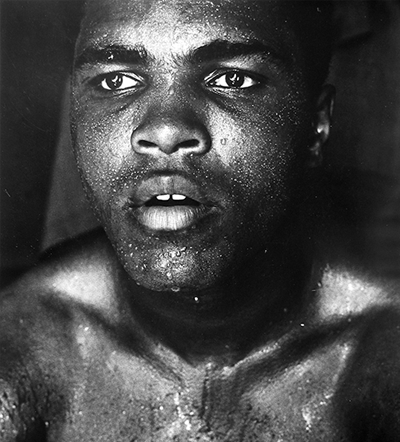
Muhammad Ali, Miami, Florida, 1966. Gelatin silver print, printed later
These images could easily have been trite or cheesy, but Parks’ visual fluency and thoughtfulness elevate them beyond mere illustration. This achievement can be seen through the lens of his own life: he grew up poor in Kansas, lost his mother at 14, and spent many of his teen years homeless, eking out a living by playing piano in a bordello. Clearly, Invisible Man’s hard truths resonated for him.
If alive today, Parks would have been 100. In fact he almost made it, dying in 2006 at the age of 93. Along with Invisible Man, the Greenberg gallery has another show, Gordon Parks: Centennial, which traces Parks’ distinguished multi-decade career in the arts. Other museums around the city are joining the centennial celebration. The Schomburg Center for Research in Black Culture is showing Gordon Parks: 100 Moments, and Gordon Parks: A Harlem Family 1967 will be on view at the Studio Museum in Harlem beginning November 7th.




 Facebook
Facebook Permalink
Permalink Digg
Digg Reddit
Reddit LinkedIn
LinkedIn StumbleUpon
StumbleUpon Tumblr
Tumblr

